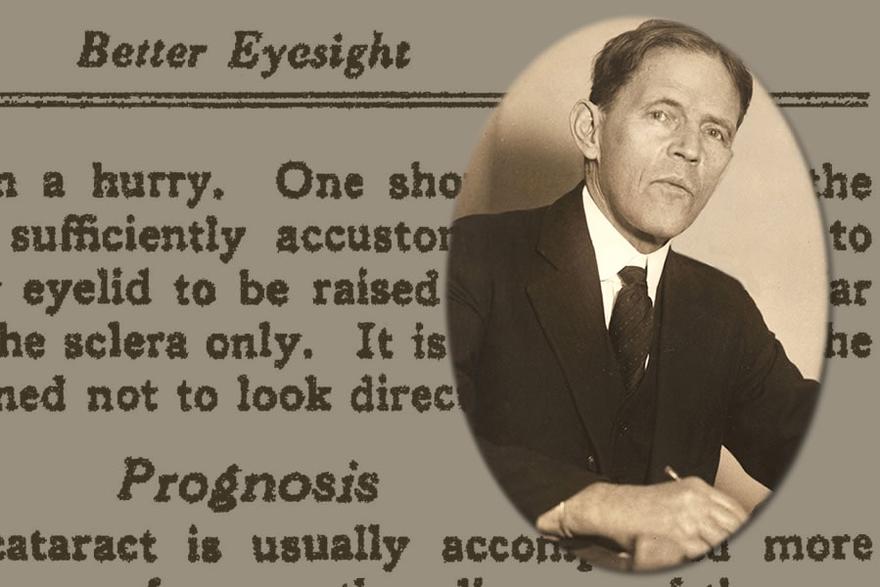What The Bates Method Entails

Improve Your Sight Naturally
by Greg Marsh, Certified Natural Vision Teacher
Article from Health Central News, 11/1/05
Imagine going through your day seeing clearly without glasses or surgery. Many thousands of people have reduced their prescription or stopped wearing glasses altogether using natural methods. Nearsightedness, farsightedness, astigmatism and other conditions have been helped.
Aldous Huxley, author of Brave New World, was going blind and reading Braille when he met a “Bates Method” natural vision teacher. Eye doctors had given up on him. Huxley regained his sight and wrote The Art of Seeing to explain how our stressful culture breeds poor eyesight. He said “dynamic relaxation” is required to see clearly and to think clearly.
The pioneer of natural vision improvement methods was Ophthalmologist William H. Bates. This observant doctor noticed that people with poor vision stare and strain to see everything at once. He found people with perfect sight shift their attention many times every minute, all day long. All that shifting sounds like a lot of work, but brain science tells us the mind needs constant movement to relax and do its job.
Each eye has six “extra-ocular” muscles to move it in all directions. These muscles around the eyeball are similar to your fingers holding a pen to write. Some people write easily and effortlessly. Others grip the pen so tightly they get cramps in their hands. Imagine your eyes being under this kind of pressure – that’s exactly what the Bates model says is a key factor in poor eyesight.
Natural vision improvement is not a medical treatment. It’s more like meditation and yoga. Most people succeed best with a mix of explanation, activities, guided visualization, and other techniques to help them absorb natural vision principles. The common presumption that your eyes have gotten lazy is backwards. The natural vision approach suggests that your sight is blurred because your eyes strain and work too hard, and that your vision will improve as you rediscover natural ease in seeing.
How long does it take to improve your eyesight naturally? A person with a mild prescription and belief in the process may be back to perfect vision in a few weeks. A person with an extreme prescription may take much longer, even up to several years of gradual progress.
The Bates model says the limiting factor is almost always in the mind, not the eyes. People with multiple personalities demonstrate how quickly the eyes can see when the mind is ready. One personality may require strong glasses while another needs weaker glasses or none at all. In the book The Three Faces of Eve, Chris Sizemore used different glasses for her different personalities. Her eyesight changed each time her mind shifted. Similarly, people who improve their vision often report a mental shift that brings more ease and relaxation to their lives.
Many students find the side benefits of vision improvement even more exciting than clearer eyesight. Optometrist Ray Gottleib has been a leading advocate of the Bates Method and natural vision improvement for over thirty years. For himself and his clients he says the visual changes “provide tremendous growth and self knowledge.”
You can find dozens of books about the Bates Method and natural vision improvement. A few are written by optometrists. Most are written by natural vision teachers. On the internet you can also find an abundance of “eye exercise programs.” This task-oriented approach works for some, but it lacks subtleties that most people need to restore faith in their vision. Many people who have tried to improve their sight find their first real progress when they take a class with a natural vision teacher.
Of course you must wear glasses if you need them to be safe and legal for driving, and you should have regular eye exams. If you enjoy taking charge of your health, you may find natural vision improvement to be a rewarding journey beyond the standard realm of glasses, contacts, and laser surgery.

0 comments
Leave a comment
Please log in or register to post a comment